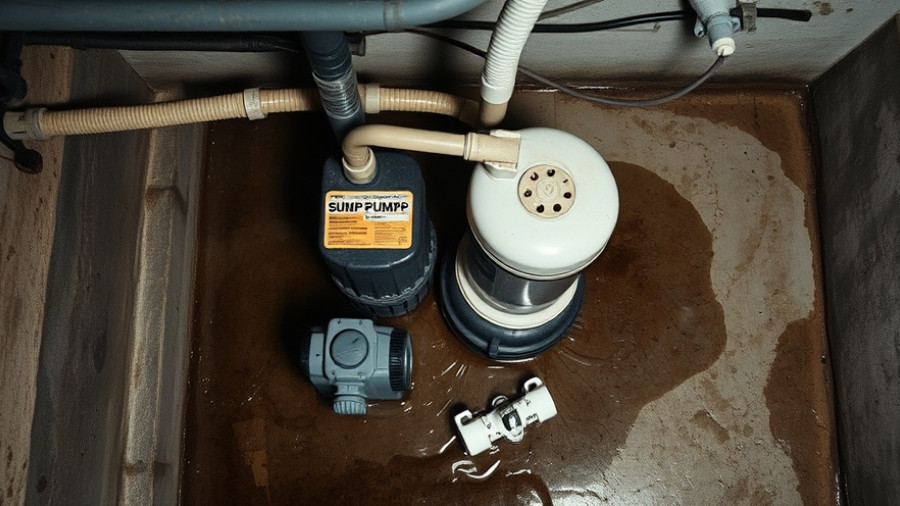
Understanding the Importance of Sump Pump Maintenance
Have you ever thought about your sump pump? If you are like most homeowners, it hums quietly in the background, performing a vital role in preventing water damage in your basement. While we may overlook its significance, understanding how often to test your sump pump is key to avoiding minor inconveniences turning into costly disasters.
How Does a Sump Pump Work?
A sump pump serves as your home's guardian against water accumulation. Installed typically at the lowest part of your house, it functions by pulling water into a sump pit where it can be pumped away from your home before it causes damage. The pump activates when water in the pit reaches a certain level, and once the water level drops, the pump automatically shuts off. It’s a simple yet effective mechanism that reduces the risk of flooding, mold growth and property damage.
When Should You Test Your Sump Pump?
According to industry experts, performing routine maintenance on your sump pump is not just recommended, it’s essential. It’s suggested that homeowners check and test their sump pumps at least once a month. To do this, simply pour a bucket of water into the sump pit to raise the float switch. If the pump activates, you’re in good shape. If not, it’s time to investigate.
Quarterly and Annual Maintenance: A Must!
While monthly tests are advisable, seasonal checks will ensure that your sump pump operates effectively when you need it most. Dust, dirt, and debris can accumulate over time, obstructing the pump’s inlet screen. Cleaning this component at least four times a year can prevent malfunctions.
Moreover, an annual inspection allows for deeper care. Each year, remove the pump from the pit to check for clogs, clean the inside of the pit, and inspect the entire system's working components. Don’t forget to check the backup power source because a hefty storm could render your primary pump useless—and that’s when a battery-powered backup comes into play!
Signs It’s Time for Repair or Replacement
Even your beloved sump pump can falter. Be on the lookout for signs like continuous running, unusual noises, or a pump that shuts off too soon. If your sump pump is pushing a decade of service, consider a proactive replacement, as older pumps are less efficient and more prone to failure.
Why You Should Care: Avoiding Costly Water Damage
Water may be a vital resource, but in your basement, it can cause chaos! Protecting your home’s foundation and your belongings from water damage is paramount. Issues like flooding can lead not only to extensive repair bills but also create an environment ripe for mold growth, which could affect your family’s health.
A Funny Yet Vital Reminder
Remember, it’s better to be proactive than reactive! Think of your sump pump like a car’s check engine light—ignoring its signals can lead to a breakdown. You don’t want to be that person who discovers their sump pump isn’t functioning during a surprise rainstorm. So, maintain it, check it, and if needed, love it!
The Bottom Line
A small dose of preventative maintenance can save you thousands down the road. Your sump pump may live under your house, but trust me, it deserves your attention! Dedicate a few minutes each month to test it and ensure it’s functioning correctly, and you’ll keep your home safe from the unexpected.
For those ready to take their sump pump maintenance to the next level, we highly recommend calling in the pros for that annual check-up. Not only can they provide peace of mind, but they can also catch potential issues before they snowball into costly repairs.
 Add Row
Add Row  Add
Add 



Write A Comment